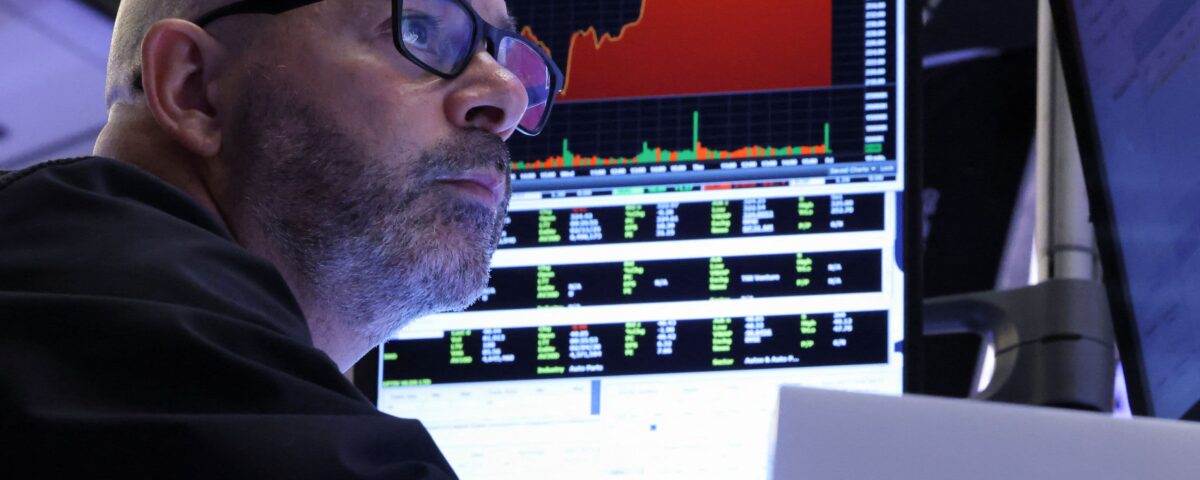
Unpacking the Taylor Lorenz Intruder Incident: Media Responsibility in Digital Age
Tháng 4 14, 2025Crude Oil Futures: Navigating Market Volatility and Future Trends
Tháng 4 14, 2025Understanding Recent Volatility on Wall Street: A Look at Zero-Day Options and Tariff Uncertainty
In recent weeks, Wall Street has experienced notable volatility, significantly influenced by two major factors: trade tariff fluctuations and the introduction of zero-day options. The interplay of these elements has generated a complex environment for investors, navigating through rapid market movements and economic uncertainties.
Market Volatility: Key Influencers
Tariffs and Trade Uncertainty
The current volatility in the market is greatly attributed to the contentious tariff policies enacted by President Trump. As tariffs are imposed and revised, investor sentiment is understandably shaken, making it challenging to foresee the economic implications that arise. The unpredictable nature of these trade policies not only amplifies anxiety among investors but also results in erratic market responses. The uncertainty creates a ripple effect—businesses might hesitate to invest or expand, leading to shifts in market performance that reverberate across various sectors. For a detailed look into China’s strategic moves amidst ongoing trade tensions, read more here.
Zero-Day Options
A relatively new financial instrument, zero-day options allow traders to engage in speculation with options that expire on the same day. This feature inherently encourages rapid trading decisions that can drastically change market dynamics. As traders react to fresh news or events, the heightened activity related to these options can cause pronounced price swings on the market. This rapid-fire trading introduces an additional layer of sensitivity, making the market more reactive to announcements, which can further exacerbate volatility.
Market Performance and Investor Indicators
S&P 500 Movements
Notably, the S&P 500 recently recorded its most substantial one-day gain since October 2008, jumping by 9.5%. Despite this leap, it is crucial to recognize that the index remains down approximately 13% from its February peak. This significant swing highlights the erratic nature of the market, reinforcing the importance of keeping a close watch on underlying economic fundamentals. Investors should also be aware of common pitfalls when engaging in the market; thus, exploring the key investment mistakes to avoid can be beneficial, as outlined here.
Cboe Volatility Index (VIX)
The Cboe Volatility Index, better known as the VIX, is a valuable gauge of investor anxiety. Currently, the VIX is elevated, standing at more than two times its historic median level. This upward spike serves as a clear indicator of the prevailing uncertainty and fear among investors, underscoring the need for vigilance amidst the volatile landscape.
Economic Underpinnings Amidst Fluctuations
Retail and Consumer Sentiment
Recent data revealing U.S. retail sales and consumer sentiment should ideally provide insights into the health of the economy; however, these indicators are often shrouded by the overarching trade tensions. Discrepancies in economic data may give an overly optimistic view of consumer behavior, which could be misleading in light of heightened anxiety over future economic conditions.
Interest Rates and Bond Market Dynamics
In a further complication of the financial landscape, rising Treasury yields—now exceeding 4.5%—have started to catch investors’ attention. These higher rates could signal increasing borrowing costs, making bonds increasingly attractive compared to stocks. This shift in preference can lead to a recalibration of capital flows across markets, adding to the instability already present. Understanding these dynamics can also help investors avoid common mistakes; those interested in psychological aspects of investing can check out insights on investment pitfalls here.
In conclusion, the recent market volatility on Wall Street reflects complex interdependencies between external factors, investor behavior, and economic conditions. As traders navigate this turbulent environment, understanding the implications of both tariff uncertainties and financial instruments like zero-day options will be crucial for making informed investment decisions.

